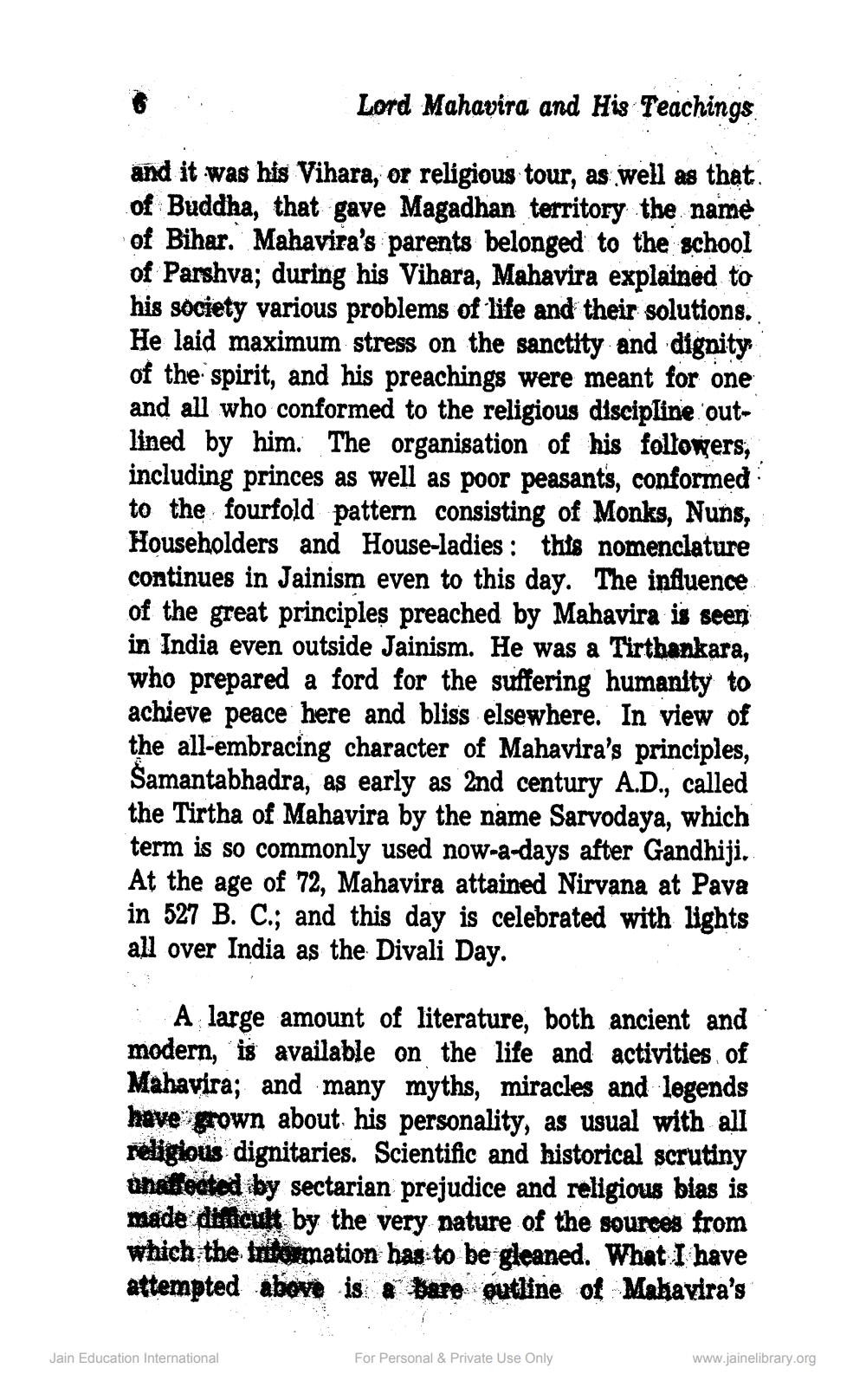________________
Lord Mahavira and His Teachings
and it was his Vihara, or religious tour, as well as that of Buddha, that gave Magadhan territory the name of Bihar. Mahavira's parents belonged to the school of Parshva; during his Vihara, Mahavira explained to his society various problems of life and their solutions. He laid maximum stress on the sanctity and dignity of the spirit, and his preachings were meant for one and all who conformed to the religious discipline outlined by him. The organisation of his followers, including princes as well as poor peasants, conformed to the fourfold pattern consisting of Monks, Nuns, Householders and House-ladies : this nomenclature continues in Jainism even to this day. The influence of the great principles preached by Mahavira is seen in India even outside Jainism. He was a Tirthankara, who prepared a ford for the suffering humanity to achieve peace here and bliss elsewhere. In view of the all-embracing character of Mahavira's principles, Samantabhadra, as early as 2nd century A.D., called the Tirtha of Mahavira by the name Sarvodaya, which term is so commonly used now-a-days after Gandhiji. At the age of 72, Mahavira attained Nirvana at Pava in 527 B. C.; and this day is celebrated with lights all over India as the Divali Day.
A large amount of literature, both ancient and modern, is available on the life and activities of Mahavira; and many myths, miracles and legends have grown about his personality, as usual with all religious dignitaries. Scientific and historical scrutiny Onanected by sectarian prejudice and religious bias is made dimicult by the very nature of the sources from which the triommation has to be gleaned. What I have attempted above is a bare outline of Mahavira's
Jain Education International
For Personal & Private Use Only
www.jainelibrary.org




